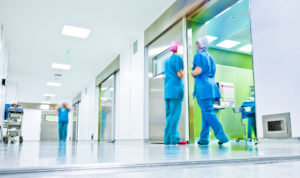
A growing cause for concern both within and outside of the medical community is harm caused once someone has made it to the hospital. Hospital negligence can be serious and even deadly, but it is still not clear to what extent this problem is becoming worse or being successfully by hospital and medical professionals. The medical community continues to study the problem, but the numbers appear to be getting worse. The problem is complicated by the fact that worsening numbers in studies may mean more reporting, rather than more injuries, or simply more patients being injured in the hospital each year. Sadly, many of these hospital injuries may actually be preventable.
If you have been injured, or someone you know has been injured or killed due to hospital error in New Jersey, it is important to have someone looking out for your interests during such a difficult time. Having suffered potentially preventable hospital injuries, you should consult with an experienced medical malpractice attorney as soon as possible to ensure your rights and interests are thoroughly protected and advocated for. Contact Fronzuto Law Group today at 973-435-4551 to discuss your hospital injuries with an experienced New Jersey medical malpractice lawyer with extensive experience handling lawsuits against hospitals across the state. We can be reached anytime online or by phone to provide you with a free consultation.
Preventable Hospital Injuries: Understanding the Issue
The matter first began to achieve public note in 1999, when the Institute of Medicine (part of the National Academy of Sciences) came out with a huge report on fatalities during in-patient treatment. The study, titled “To Err is Human,” found that some 98,000 people were killed by mistakes in U.S. hospitals each year. Ten years later, the U.S. government found that hospital errors caused the deaths of some 180,000 Medicare patients per year. Finally, a report published in the Journal of Patient Safety last fall concluded the government study was off. The number should have been anywhere from 210,000 and 440,000 deaths annually. If accurate, hospital errors are the third-largest cause of death in this country.
Looking at non-fatal errors is not much better. The Department of Health and Human Services did a study in 2010, and concluded that as many as one in seven patients in U.S. hospitals suffer some kind of error in their treatment. In 2012, a nonprofit group rated hospitals on factors such as adherence to safe practices, cleanliness, and in-hospital illnesses such as bed sores and hospital infections. 73 New Jersey hospitals were rated, only 32 percent received A grades, with 45 percent receiving Bs and 21 percent Cs.
Causes of Preventable Hospital Injuries
One of the most common issues found by the government’s study was mistakes with medications and prescription drugs, making up almost one-third of errors. A common strategy to reduce these errors (and one taken into account by letter grades above) was using a computer to enter prescriptions. This small change can have huge consequences: up to a 60 percent reduction in errors, according to one study. Computers can quickly identify interactions and errors in dosage, and there is still room for improvement.
Another major source of in-hospital injuries are falls, including falls in the emergency room. In fact, the most prevalent injury in hospital are falls, from about 1.7 to 25 falls in 1,000 patient days, which are all considered avoidable. The highest fall risk occurrs in the acute care setting. Of the 37 million hospitalizations in the U.S. annually, it is estimated that there are over 1 million falls per year. Among those, approximately 2 to 8 percent are serious injuries, such as fractures or head injuries. Less than 1% result in death. Still, that pencils out to about 11,000 deaths from falls in hospitals per year, all of which are preventable. The Connecticut Post reported on a World Health Organization study, which found that falls are the second-leading cause of accidental injury and death worldwide.
So, if preventable, why do falls happen in hospitals? Falls may occur due to a person’s physiological condition, such as altered mental states, abnormal walking, medications that affect balance or frequent toilet visits. They are also due to environmental factors, like hospital staff failing to place a call light within a patient’s reach, overestimating a patient’s balance in physical therapy treatment, or not assessing a patient’s risk of falling after certain procedures. Some errors result from inappropriate standards or insufficient training for fall prevention among personnel. Patients must be monitored to assess fall risk and especially after patients are injured in a fall.
NPR reported on one example back in October 2013. A man was admitted to a Seattle hospital due to back pain, and was admitted for an overnight stay. The level of pain made it difficult for him to sleep, so he was given Ambien. One of Ambien’s side-effects is sleepwalking, and the patient fell and broke three ribs. This injury caused an additional two weeks’ stay in the hospital. Research by the Mayo Clinic determined that Ambien is responsible for a four-fold increase in the risk of fall during a hospital stay.
Questions about Preventable Hospital Injuries? Contact NJ Lawyers for Help
Preventable injuries and deaths remain a significant problem for the U.S. healthcare system. If you or your loved one has been injured in a New Jersey hospital, seek counsel to explore your options for getting legally compensated for your damages. Contact our medical malpractice law firm online or call our local NJ offices at 973-435-4551 for a free review of your case and find out if you may have grounds for a lawsuit.
Resources:
Fall and Injury Prevention, Patient Safety and Quality: An Evidence-Based Handbook for Nurses, NCBI

